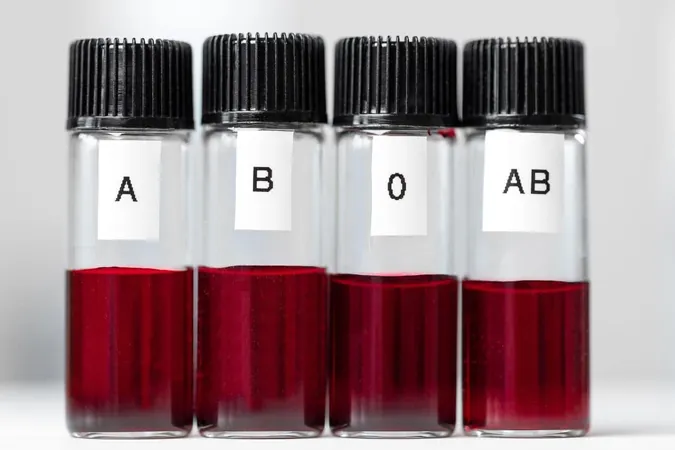
A Hidden Blood Group Emerges After 50-Year Mystery!
2025-04-15
Author: Ken Lee
For more than five decades, the scientific world has been captivated by a baffling enigma within human blood types. It all started in 1972 when doctors stumbled upon a remarkable discovery during a pregnant woman’s blood examination, revealing a sample that was missing a crucial surface molecule found on every other known red blood cell.
Breaking News: The MAL Blood Group is Here!
Fast forward to 2024, and scientists have finally solved this long-standing dilemma, announcing the discovery of a new blood group system that could revolutionize medical care for those with rare blood types.
Pioneering this groundbreaking research was Dr. Louise Tilley, a hematologist with the UK National Health Service, who dedicated nearly two decades to studying this peculiar genetic anomaly. The newly identified MAL blood group now joins the ranks of other blood classification systems like the ABO and Rh groups.
What Makes MAL Unique?
Unlike established systems, the MAL blood group is defined by the absence of an antigen known as AnWj. Intriguingly, over 99.9% of people have this antigen; however, the 1972 patient who triggered the investigation had none at all, prompting an extensive research effort led by Dr. Tilley.
The MAL blood group takes its name from the MAL protein, crucial for stabilizing cell membranes and facilitating cellular transport. This discovery was the result of meticulous research into the genetic foundations of AnWj-negative blood types.
Unlocking the Genetic Mystery of MAL
Researchers established a direct link between the MAL gene and the absence of the AnWj antigen. By introducing a normal MAL gene into the cells of affected patients, they successfully restored the missing antigen, validating the gene’s critical role.
Dr. Tilley remarked on the challenges posed by the rarity of this condition, noting, "The work was difficult because genetic cases are very rare," highlighting the struggle to identify the genetic markers associated with this anomaly.
The Genetics Behind MAL Blood Type
Individuals who inherit mutated versions of both their MAL genes exhibit an AnWj-negative blood type. This pivotal discovery enables healthcare providers to diagnose patients carrying this exceptional blood type.
Interestingly, some individuals with this blood type didn’t present the expected genetic mutation, suggesting that other health conditions might inhibit the presence of the antigen on their red blood cells.
Implications for Healthcare
The revelation of the MAL blood group comes with substantial medical implications. As an exceedingly rare blood type, understanding its genetic origins allows healthcare professionals to offer enhanced care tailored for individuals with this group.
Furthermore, the identification of the MAL gene now enables medical professionals to determine whether a patient's AnWj-negative status is inherited or influenced by genetic suppression.
Dr. Tim Satchwell, a biologist at the University of the West of England, emphasized the difficulty of pinpointing the MAL protein, stating, "MAL is a very small protein with intriguing properties that complicated our identification process, requiring us to explore multiple avenues to gather the evidence needed to confirm this blood group system."


 Brasil (PT)
Brasil (PT)
 Canada (EN)
Canada (EN)
 Chile (ES)
Chile (ES)
 Česko (CS)
Česko (CS)
 대한민국 (KO)
대한민국 (KO)
 España (ES)
España (ES)
 France (FR)
France (FR)
 Hong Kong (EN)
Hong Kong (EN)
 Italia (IT)
Italia (IT)
 日本 (JA)
日本 (JA)
 Magyarország (HU)
Magyarország (HU)
 Norge (NO)
Norge (NO)
 Polska (PL)
Polska (PL)
 Schweiz (DE)
Schweiz (DE)
 Singapore (EN)
Singapore (EN)
 Sverige (SV)
Sverige (SV)
 Suomi (FI)
Suomi (FI)
 Türkiye (TR)
Türkiye (TR)
 الإمارات العربية المتحدة (AR)
الإمارات العربية المتحدة (AR)